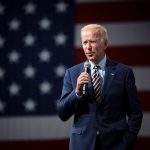
Health care workers get first shot at the shot
WINDOW ROCK
Physician Daniel Mays, with the University of California at San Francisco’s HEAL initiative and who treats Navajo COVID-19 patients, sat in a chair wearing his facemask, and gave thumbs up as he received the first dose of the Pfizer BioNTech COVID-19 vaccine.
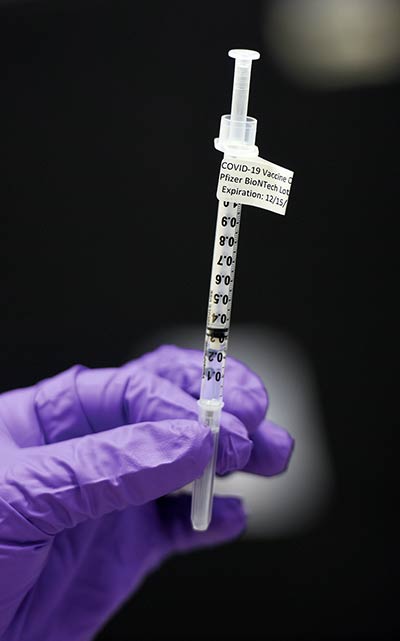
Navajo Times | Donovan Quintero
A dose of the Pfizer/BioNtech COVID-19 vaccine awaits a health care worker’s arm this week.
Mays was one of hundreds of health professionals across the Navajo Nation to receive the vaccine, which was FDA approved over the weekend and shipped to the Navajo Nation Monday.
“It’s so important because so many of our staff has been infected,” said Mays. “I’m not originally from here, but so many of our staff are, and their family are from here. Being able to get this vaccine is so huge.”
Last Thursday, the Navajo Times reported 3,900 Pfizer COVID-19 vaccines were making their way to Navajo, and 7,800 Moderna vaccines would follow in about seven days, according to the Navajo Area Indian Health Service.
Both COVID-19 vaccines, Pfizer and Moderna, will require two separate doses to be administered at two different times, so Mays has another dose to take in three weeks.
Hesitation and nervousness have surrounded the vaccines, and Mays can understand that. “Yeah, I was (worried) just because we don’t have any long-term safety data,” said Mays. “But not worried enough not to take (the vaccine), because I want to see my grandmother. Having worries is normal.”
On Thanksgiving Day, Mays emotionally told of how he had to take a phone into a dying COVID-19 patient’s room so the family could say goodbye. Preventing heartbreaking moments like this is why Mays believes taking the vaccine is vital.
“It was one of those painful things I ever had to experience,” said Mays, “because they were saying goodbye to their granddad, and I remember saying goodbye to my granddad, but I was there with him. “No one should have to go through that,” he said. “If this works, it’s worth the uncertainty to put that kind of spiritual suffering to an end.”
When it comes to the distribution of the vaccine there will be three phases. This week began the “early or limited dose phase.” The first priority is: health care workers; emergency medical service staff; traditional practioners; all staff and patients in long-term nursing facilities. The next group will include essential workers who provide food, supplies, transportation or utilities to the Navajo people.
The third group is all high-risk patients and adults over 65.
“The next phase there will be a lot more vaccines available,” said Loretta Christensen, chief medical officer for the Navajo Area Indian Health Service. “We anticipate this in early 2021,” she said. “We have great confidence in the vaccine that is coming out. Getting the vaccine is voluntary … but it’s important to vaccinate as many people that we can, while we practice safe measures we shared with you: watch your distance, wash your hands, and wear your masks.”
During a Tuba City Regional Health Care Corporation live update Monday, Dr. Diana Hu and Dr. Sophia Calderon discussed why people should consider taking the vaccine. The health care center received 95 vials, for a total of 475 doses.
“Getting the vaccine will help protect you from getting COVID-19,” said Calderon. “It actually will help people get a less severe version of illness if you do end up getting COVID-19 after getting the vaccine.”
As of Dec. 8, over 43,000 people have volunteered for the Pfizer vaccine trials worldwide, including members of the Navajo Nation and the White Mountain Apache Tribe. Moderna is also seeking approval from the FDA for its COVID-19 vaccine, which has also shown 94.5% effectiveness.
“We are extremely lucky that both of them are 95 percent effective at preventing coronavirus illness,” said Hu. “That is astounding. There are very few other vaccines that are that spectacular.
“The measles vaccine, the mumps vaccine, German measles/rubella, polio vaccines are equally effective and with those vaccines polio was basically eliminated from the western hemisphere,” she said. “With those vaccines measles was basically eliminated from the United States until people started refusing their vaccine.”
As of Tuesday, health officials reported 160 new COVID-19 positive cases for the Navajo Nation and a total of 727 deaths.
The report indicated that 10,726 individuals have recovered from the virus and 185,366 COVID-19 tests have been administered — more than one test for everyone on the reservation, although some people have not been tested and others have been tested multiple times.
The total number of positive COVID-19 cases on Navajo is now 19,929. There are also 77 communities identified as having uncontrolled spread.
In a PBS interview two weeks ago, Mays had likened the second wave of the virus to a “tsunami” as opposed to the first wave the Navajo Nation experienced in the spring.
The Navajo Area IHS said the simultaneous peaking of the Navajo Nation’s second wave and the surrounding states’ third wave became problematic when it comes to competing for resources. “We all need high-flow oxygen, we all need critical medication, we all need more oxygen tanks and (it is) hard to get that equipment and supplies,” said Christensen. “If we don’t stop COVID, we are going to run out of beds, nurses, and supplies.”
During President Jonathan Nez’s virtual town hall on Tuesday, it was announced that case numbers look to be slowing down but people still need to abide by public health mandates such as the stay-at-home order and 57-hour weekend lockdown until Dec 28.
“We do have evidence that the Navajo Nation is taking a different course from the United States,” said Dr. Puthiery Va with Chinle Comprehensive Health Care Facility. “There is suggestion of a slow down and a plateau.” Mays said, in his opinion, “We’re tenuously at a place where we are dealing, but it is not ideal.”
Before the Thanksgiving holiday the Navajo Area IHS reported signs of a plateau, but Thanksgiving family gatherings and travel increased the cases instead. Navajo leadership has expressed concerns again as Christmas approaches.
“We have to stay strong, remain optimistic, and keep focusing on protecting ourselves and our loved ones,” stated Nez. “We are still in a three-week lockdown, so please remain home as much as possible, wear a mask, avoid crowds, practice social distancing, and wash your hands often.”
As a public service, the Navajo Times is making all coverage of the coronavirus pandemic fully available on its website. Please support the Times by subscribing.
How to protect yourself and others.
Why masks work. Which masks are best.
Resources for coronavirus assistance

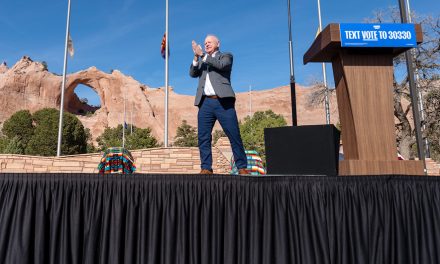
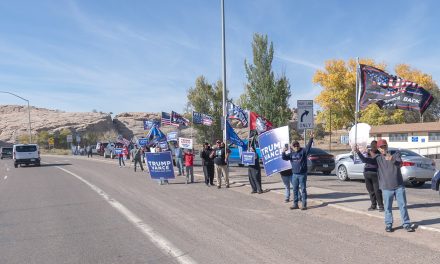
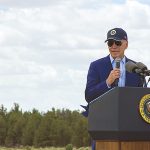
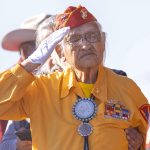
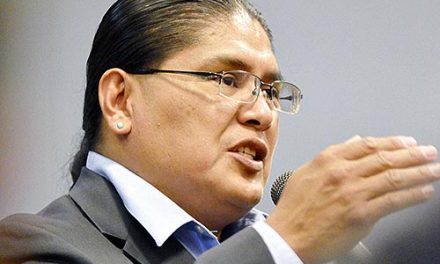


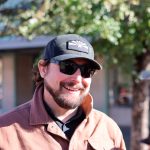

 Highway 264,
Highway 264, I-40, WB @ Winslow
I-40, WB @ Winslow